√70以上 er diagram parent child relationship 212658-Parent child relationship in er diagram
In the below ER Diagram, 'Payment' is the weak entity 'Loan Payment' is the identifying relationship and 'Payment Number' is the partial key Primary Key of the Loan along with the partial key would be used to identify the records Example2 The existence of rooms is entirely dependent on the existence of a hotel So room can be seen as the weak entity of theRecursive) is a relationship type between two occurrences of the same entity type Examples I Marriage between Person and itself I ParentChild between Person and itself I PartSubPart between Part and itself With each entity type in a cyclic relationship type we associate a role, represented by labels on lines in an ERD A parentchild relationship between two tables can be created only when there is a PRIMARY KEY in one table and FOREIGN KEY in another table Syntax diagram SQL JOIN of three tables Example SQL JOIN three or more tables Here is an example of SQL join three tables with conditions Sample table agents Sample table customer Sample table orders To get

Dezign For Databases An Entity Relationship Diagram Software Tool
Parent child relationship in er diagram
Parent child relationship in er diagram-Creating an entityrelationship (ER) model is to visually represent the structure of a business database, where data equates to entities (or objects) that are linked by defined relationships expressing dependencies and requirements By nature it is an abstract visualization, the first step in the design process towards creating a logical and functional database ERD symbols usedThe Entity Relationship Model (ERM) • ER model forms the basis of an ER diagram • ERD represents conceptual database as viewed by end user • ERDs depict database's main components –Entities –Attributes –Relationships CS275 Fall 10 2 Entities • Refers to entity set and not to single entity occurrence • Corresponds to table and not to row in relational environment • In




Entity Relationship Diagram An Overview Sciencedirect Topics
An ER diagram in which all manytomany relationships have been transformed into onetomany relationships through the introduction of composite entities can be translated directly into a set of relations To do so Create one table for each entity For each entity that is only at the "one" end of one or more relationships and not at the "many" end of any relationship, create a ER Model stands for Entity Relationship Model is a highlevel conceptual data model diagram ER model helps to systematically analyze data requirements to produce a welldesigned database The ER Model represents realworld entities and the relationships between them Creating an ER Model in DBMS is considered as a best practice before implementing your database Er Diagram Parent Child Relationship – This is among the samples of ER Diagram In order to get this diagram, click on the image right away and do as the way explains within the picture You can find this diagram for free Receive the ER diagram now Entity Relationship Diagram (Er Diagram) Of Student With Er Diagram Parent Child Relationship Uploaded by
ER Diagram Components (1/3) Entity Entities are represented by means of rectangles Rectangles are named with the entity set they represent Attributes Attributes are the properties of entities Attributes are representedWe say, the entity sets E1, E2, ,En participate in a relationship set R ER Diagram The following diagram shows that the mapping cardinality of the relationship set "DEPTEMPLOYEE" is "onetomany" That is, each department has many employees and each employee is associated with at most one department The line from a relationship set to a participating entity set will beDiagrammatic technique called an EntityRelationship diagram What are the differences between this ER diagram and the previous page's ER diagram Note The Child has no NRIC attribute Note The line on the arrow to the attribute Given_name indicates this attribute together with the identifier of Employee (ie E#) form the identifier of the weak entity type Child So, we
3 Hierarchical model is also called Tree structure; "parent" describes the relationship, as in "parentchild relationship" also known as a recursive relationship In this example a Category can be a superset of other categories (ie it is a "parent" category) it can also be a child of yet another Category This is a common scenario as it gives you a hierarchy of categories So the "parent" line in the diagram is showing you thatA publisher can publish many (multiple) books 10 Books Publishers Publish / Published by




Entity Relationship Diagram An Overview Sciencedirect Topics



Entity Relationship Diagram Summarizing The base Relational Data Download Scientific Diagram
The results contain parentchild relationship information You can also examine the enterprise WSDL for your organization To find the names of child relationships, look for entries that contain the plural form of a child object and end with type="tnsQueryResult"A child must be identified uniquely by name when the parent (who is an employee;By nature it is an abstract visualization, the first step in the design process towards creating a logical and functional database ERD symbols used for professional ERD drawing are collected in libraries from the EntityRelationship Diagram (ERD) solution for ConceptDraw DIAGRAM Er Diagram Parent Child Relationship




Mapping Schema And Recursively Managing Data Part 1




Li Chen S Blog Theory And Practice Of Database And Data Analysis 4 Capturing Additional Information On Relations
Verb phrases describe the relationship that you create between a parent and child entity You can create these two types of verb phrases for a relationship Parenttochild verb phrase Childtoparent verb phrase In the following example, you can add the verb phrase to describe the relationship between the parent entity MOVIE and the child entity MOVIECOPYThe married couple You should assume that the parents of a child were married at the time of his birth Draw an entity relationship diagram to model the information described above Remember to put edge constraints (arrows) and participation constraints (thick lines) where needed Underline the key attributes of each entity in the diagram If1 Which of the following indicates the maximum number of entities that can be involved in a relationship?




Many To Many Data Model Wikipedia




Rails Erd Gallery Of Example Diagrams
ParentChild relationship between the tables that connect them Many to many relationship between the tables that connect them Network model between the tables that connect them None of the above 2 In ER Diagram relationship type is represented by Ellipse;E/R Diagrams •In an entityrelationship diagram §Entity set = rectangle §Attribute = oval, with a line to the rectangle representing its entity set Employee Works_At essn Branch ename phone children since seniority bname bcity manager Works_For worker Entity Set Relationship Set Attribute Employee Works_For phone Lots of notation to come E/R Data Model An Example 172 Which type of entity cannot exist in the database unless another type of entity also exists in the database, but does not require that the identifier of that other entity be included as part of its own identifier?




Create Er Diagram For Existing Database Dataedo Tutorials




Rails Erd Gallery Of Example Diagrams
3 In a onetomany Below are predrawn ER diagram symbols in Edraw ER diagram software, including entity, weak entity, strong relationship, weak relationship, attribute, derived attribute, constraint and participation, etc There are several ER diagram notations exist and only differ a little Today, we will be briefly discussing them and their notation stylesEntityRelationship (ER) Model Agenda Characteristics of ER Model Components of ER Model Example of ER Model Enhanced ER Model Characteristics of ER Model Semantic data model Express the logical properties of an enterprise database Design tools and documentation for data base structure No physical DBMS Proposed by Dr Peter Chen Unified Modeling Language (UML)




How To Represent The Optionality Of A Many To One Mandatory Relationship From The Parent To Its Two Child Entity Types In An Erd Database Administrators Stack Exchange




Create Diagram For Amazon Rds Database Dataedo Tutorials
The aggregation link is usually used to stress the point that Class A instance is not the exclusive container of Class B instance, as in Child tables and parent tables are just normal database tables, but they're linked in a way that's described by a parent–child relationship It's usually used to specify where one table's value refers to the value in another table (usually a primary key of another table) For example, imagine a news article This could be represented by a table called articles and has fields for idIt's important to note that the aggregation link doesn't state in any way that Class A owns Class B nor that there's a parentchild relationship (when parent deleted all its child's are being deleted as a result) between the two Actually, quite the opposite!




Entity Relationship Diagrams Erds Lucidchart




Database Modeling Entity Relationship Diagram Erd Part 5 By Omar Elgabry Omarelgabry S Blog Medium
The ER diagram represents the conceptual level of database design meanwhile the relational schema is the logical level for the database design We will be following the simple rules 1 Entities and Simple Attributes An entity type within ER diagram is turned into a table You may preferably keep the same name for the entity or give it a sensible name but avoid DBMS reserved Entity Relationship Diagram Symbol Legend Posted by Allison Lynch Entity relationship diagram symbol legend provides the most frequently used symbols and shapes for making ER diagram It's a comprehensive symbol collection including all entity relationship symbols, chen ERD symbols, Martin ERD symbols, Express G symbols and ORM The other nonstandard feature Vertabelo allows you to use in logical ER diagrams is inheritance Traditional ER diagrams don't have this concept, but it has become a standard modeling technique Inheritance is denoted by an arrow that points from the child entity to the parent entity It's a UML notation The child entity inherits all parent's




Converting An Er Diagram With 2 Relationships Between 2 Entities To A Rm Schema Stack Overflow




Parent Child And Sibling Relationships Support
Assume that only one parent works for the company) is known We are not interested in information about a child once the parent leaves the company Draw anER diagram The entityrelationship model (or ER model) is a way of graphically representing the logical relationships of entities (or objects) in order to create a database;In a ManytoOne relationship, the parent table will have unique values and the child table will contain duplicate values Note When you manually create a lookup relationship, Zoho Analytics does not check the data columns if the data values adhere to the mentioned cardinality type Joining Tables using Lookup columns Lookup columns can be used to join tables where you




Er Diagrams Joins And Simple Sql Queries




Er Diagram Erd Definition Overview Lucidchart
Draw ER diagram for a database used to manage IT360 class (at least 3 entities) Specify entities, attributes, identifiers Specify relationships Specify cardinalities for relationships Class Exercise Drugwarehousecom has offered you a free lifetime supply of prescription drugs (no questions asked) if you design its database schema Given Er Diagram Parent Child Relationship –ER can be a higherlevel conceptual data model diagram EntityRelation product is based on the idea of trueentire world organizations and the relationship between the two ER modeling enables you to assess information requirements systematically to generate a effectivelymade data source So, it really is regarded a very bestIn an identifying relationship, one instance of the parent entity is related to multiple instances of the child In IDEF1X notation, an identifying relationship line is drawn as a solid line with a diamond or a filled circle at either end of the line In IE notation, an identifying relationship line is drawn as a solid line with crows feet You can create an identifying relationship when you
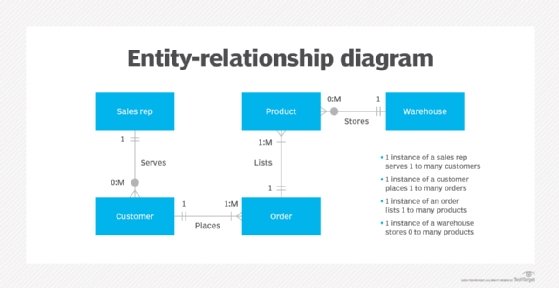



What Is Entity Relationship Diagram Erd Definition From Whatis Com




Designing A Relational Database And Creating An Entity Relationship Diagram By Craig Dickson Towards Data Science
(Alternately, create another hierarchy having virtual parentchild relationship type (VPCR) to represent the MN relationship type) The hierarchical database schema corresponding to the COMPANY ER diagram is shown in (a), and another schema for the same database with two hierarchies and four VPCRs is shown in (b)OnetoMany Relationship OnetoMany (1N) A single entity instance in one entity class (parent) is related to multiple entity instances in another entity class (child) ERD Notation (Crow's foot) A book is published by (only) one publisher; When making an ERD diagram out of a database connection, a relationships between tables are represented as follows Parent ID (PK) > Child PARENT_ID (FK) So the arrow goes FROM the 'parent' TO the 'child' I am not sure about some standard on this, but to me this is a more logical representation Parent ID (PK) < Child PARENT_ID (FK)




Web Review Planning Your Site With Entity Relationship Diagrams




Class Diagram Relationships Examples Relationships Uml Class Diagrams
An identifying relationship is one where the child table cannot be uniquely identified without its parent Typically this occurs where an intermediary table is created to resolve a manytomany relationship In such cases, the primary key is usually a composite key made up of the primary keys from the two original tables A nonidentifying relationship identified by a broken (dashed) lineEvery instance of a child entity is also an instance of the parent entity (UML Class diagrams only allow binary relationships) ER diagrams allow multivalued attributes ER diagrams allow the specification of identifiers Choice may depend on implementation target Class diagrams for Object Oriented Architecture ER diagrams for Relational Databases But this only matters if you are




Query A Parent Child Relationship In Sql Stack Overflow
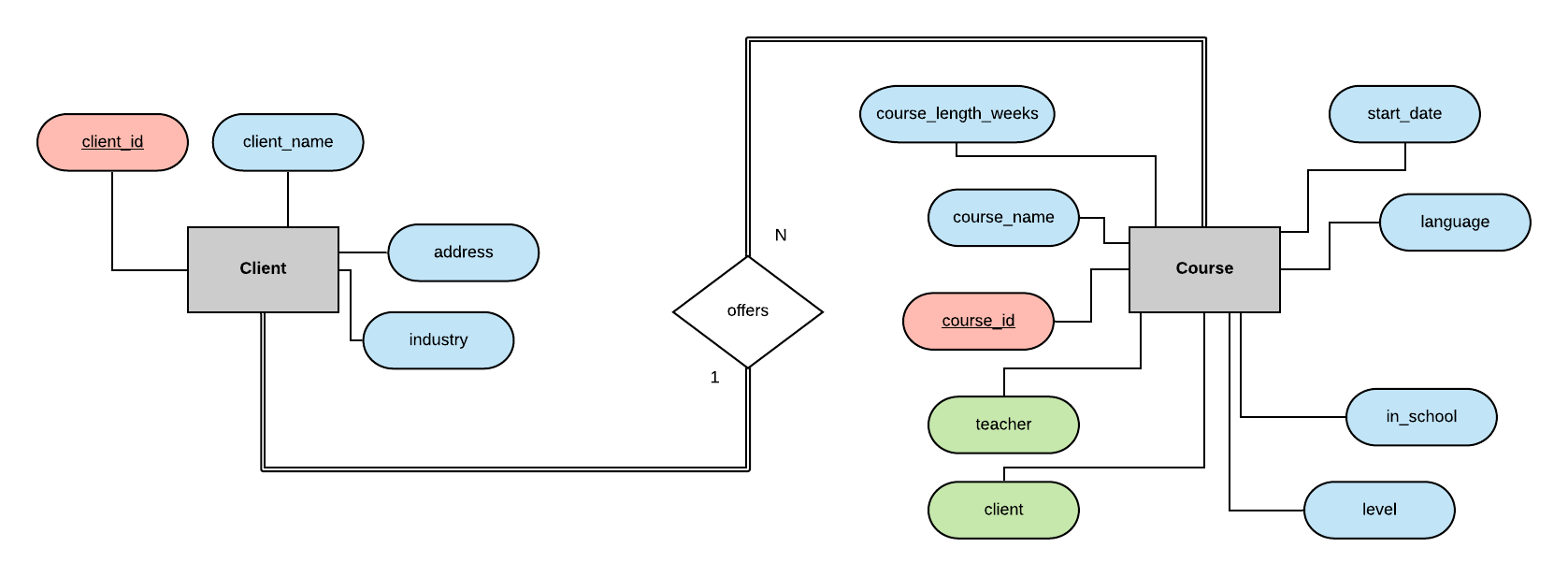



Designing A Relational Database And Creating An Entity Relationship Diagram By Craig Dickson Towards Data Science




Parent Child And Sibling Relationships Support




Class Diagram Relationships In Uml Explained With Examples




Parent And Child Relationship With The Same Foreign Table Database Administrators Stack Exchange




Mandatory Relationship An Overview Sciencedirect Topics




Dezign For Databases An Entity Relationship Diagram Software Tool




Is My Er Diagram Correct Why Use Relationships Database Administrators Stack Exchange




Er Diagram Entity Relationship Diagram Model Dbms Example




What Is Entity Relationship Model At Explain Extended




The Entity Relationship Model Learning Mysql Book




Entity Relationship Diagrams Erds Lucidchart



Entity Relationship Diagrams With Draw Io Draw Io



1




The Nursery Entity Relationship Er Diagram Download Scientific Diagram



How To Convert Er Diagram To Relational Database Learn Databases




Entity Relationship Diagram Erd Tutorial Part 2 Youtube




Entity Relationship Diagrams Erds Enterprise Architect User Guide




Representing An Either Or Relationship In Crows Foot Erd Stack Overflow




Entity Relationship Model Wikipedia




Design Your Database Using An Entity Relationship Diagram Erd In Visio Microsoft Tech Community




Entity Relationship Diagram Symbols Professional Erd Drawing




Data Modeling And Entity Relationship Diagram Erd




The Entity Relationship Model Learning Mysql Book




Introduction To The Er Data Model




What Are The Different Types Of Relationships In Dbms




Developing An Application




Inheritance Relationship In Erd Diagrams Stack Overflow




1 Entity Relationship Schema For The Company Database Download Scientific Diagram




How To Model Structure Data That Contains Parent Child Relationships For The Same Entity Software Engineering Stack Exchange




Entity Relationship Diagram
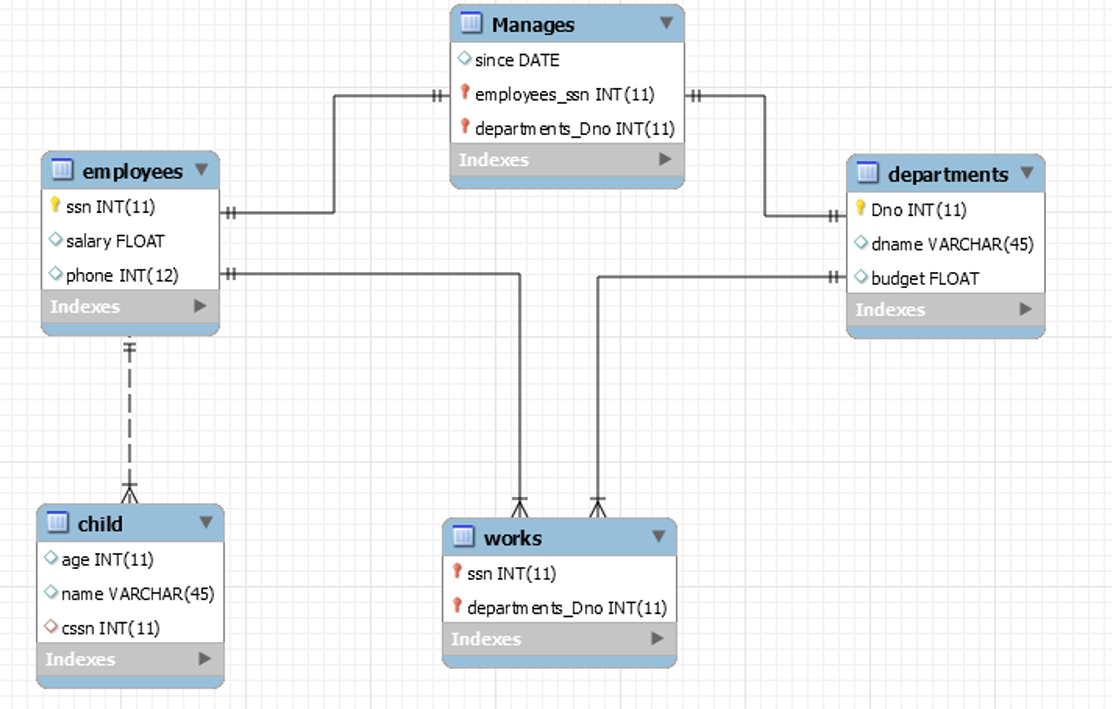



Introduction To Database Design




Introduction To The Er Data Model




Ray S Database Reflections 01 22




Introduction To The Er Data Model




Entity Set That Has A Relationship With Itself Itectec




Introduction To The Er Data Model



Understanding Relationships In E R Diagrams Toolbox Tech




Data Modeling And Entity Relationship Diagram Erd




Mapping Schema And Recursively Managing Data Part 1




Tutorial On How To Translate Or Convert Entity Relationship Diagram Erd To Database Relational Model In Database Modeling And Design Using Mysql Script And Dbdesigner An Open Source Tools




Dbeaver Documentation Dbeaver




I Created In An Er Diagram Two Relationships In Only One Can I Do That Stack Overflow




Entity Relationship Diagrams With Draw Io Draw Io




Create Er Diagram For Existing Database Dataedo Tutorials




Database Design




Entity Relationship Diagram Enterprise Architect User Guide



Relational Database Design




How To Identify A Strong Vs Weak Relationship On Erd Stack Overflow



One To Many



Entity Relationship Modeling




Modeling Entity Relationship Diagrams Ppt Video Online Download



1




Designing A Relational Database And Creating An Entity Relationship Diagram By Craig Dickson Towards Data Science




Er Diagram Erd Definition Overview Lucidchart




What Is Entity Relationship Diagram Erd Er Model Explained In Dbms With Examples Youtube



1




Entity Relationship Diagram Data Modeling Uml Diagramming Software




Entity Relationship Diagram An Overview Sciencedirect Topics




Web Review Planning Your Site With Entity Relationship Diagrams




Don T Get Wrong Explained Guide To Choosing A Database Design Notation For Erd In A While By Eric Gcc Medium




Database Design Associations
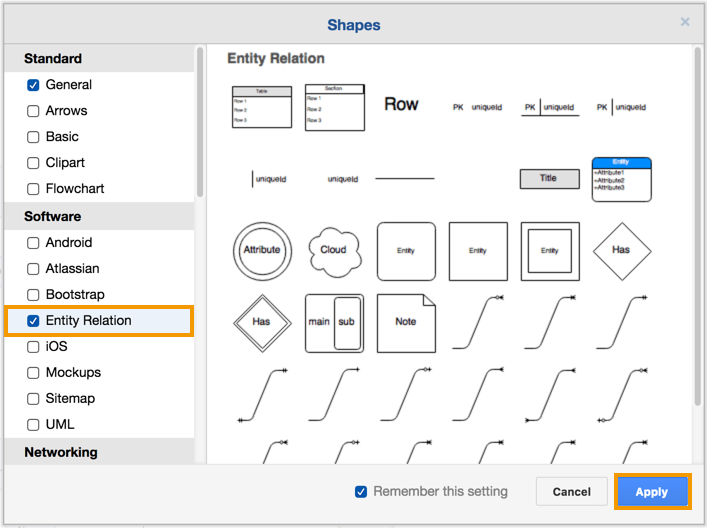



Entity Relationship Diagrams With Draw Io Draw Io



Entity Relationship Modeling




Entity Reference For Dynamics 365 Customer Voice Microsoft Docs




Relationship Types Binary In Entity Relationship Diagrams Erd By Kushani Amarabandu Medium



Entity Relationship Diagrams With Draw Io Draw Io




Data Modeling And Entity Relationship Diagram Erd




Entity Relationship Diagram Erd Er Diagram Tutorial




1 N Entity Relationships




Entity Relationship Diagram Staruml Documentation




Entity Relationship Er Diagram Part 2 Examples Sandeep Fabiani S Tech Blog




Data Modeling And Entity Relationship Diagram Erd




Data Modelling With Uml Training Material




Many To Many Relationships




Entity Relationship Model Wikipedia




Er Diagram Entity Relationship Diagram Model Dbms Example




One To One And Many To Many Database Relationships




Inverse Parent Child Relationship In Visio E R Model Stack Overflow




What Is A One To One Relationship In A Database Vertabelo Database Modeler




Logical Data Modeling Part 11 Commentary



Database Design For Kids
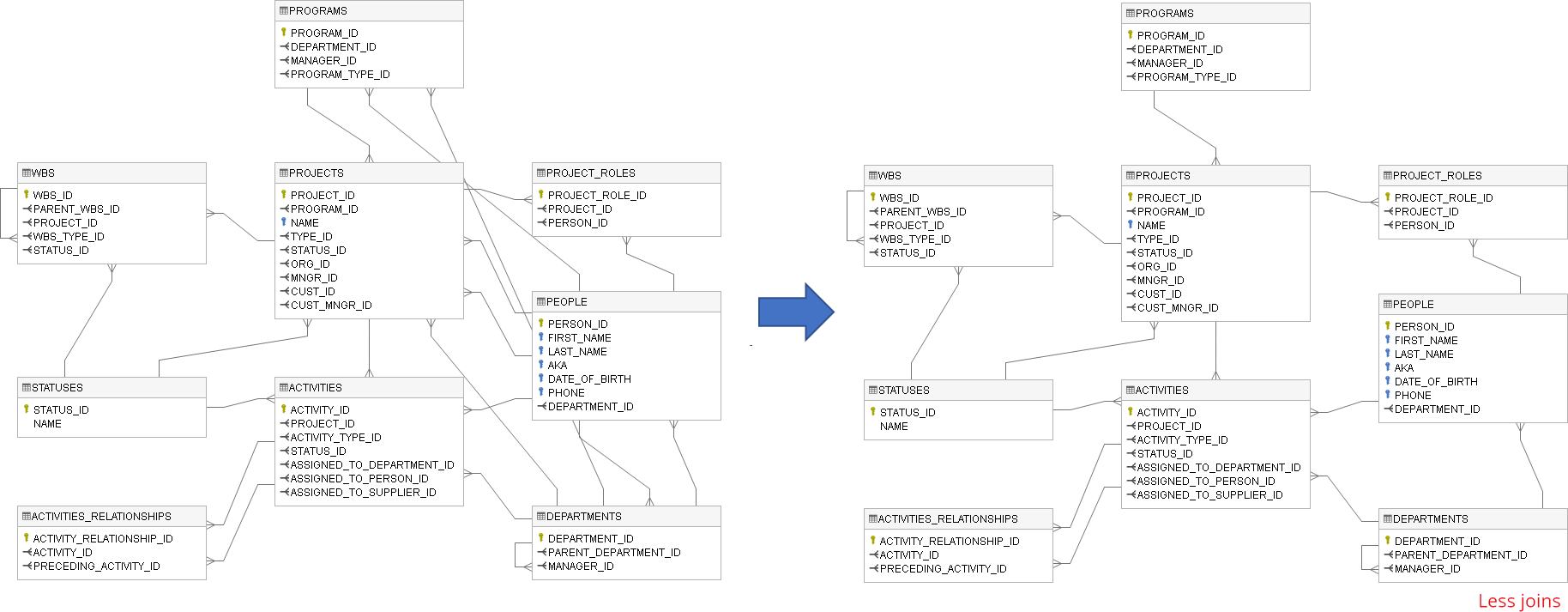



Create Er Diagram For Existing Database Dataedo Tutorials




Class Diagram Relationships In Uml Explained With Examples



コメント
コメントを投稿